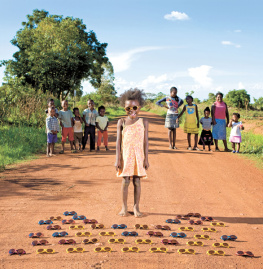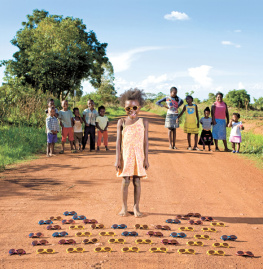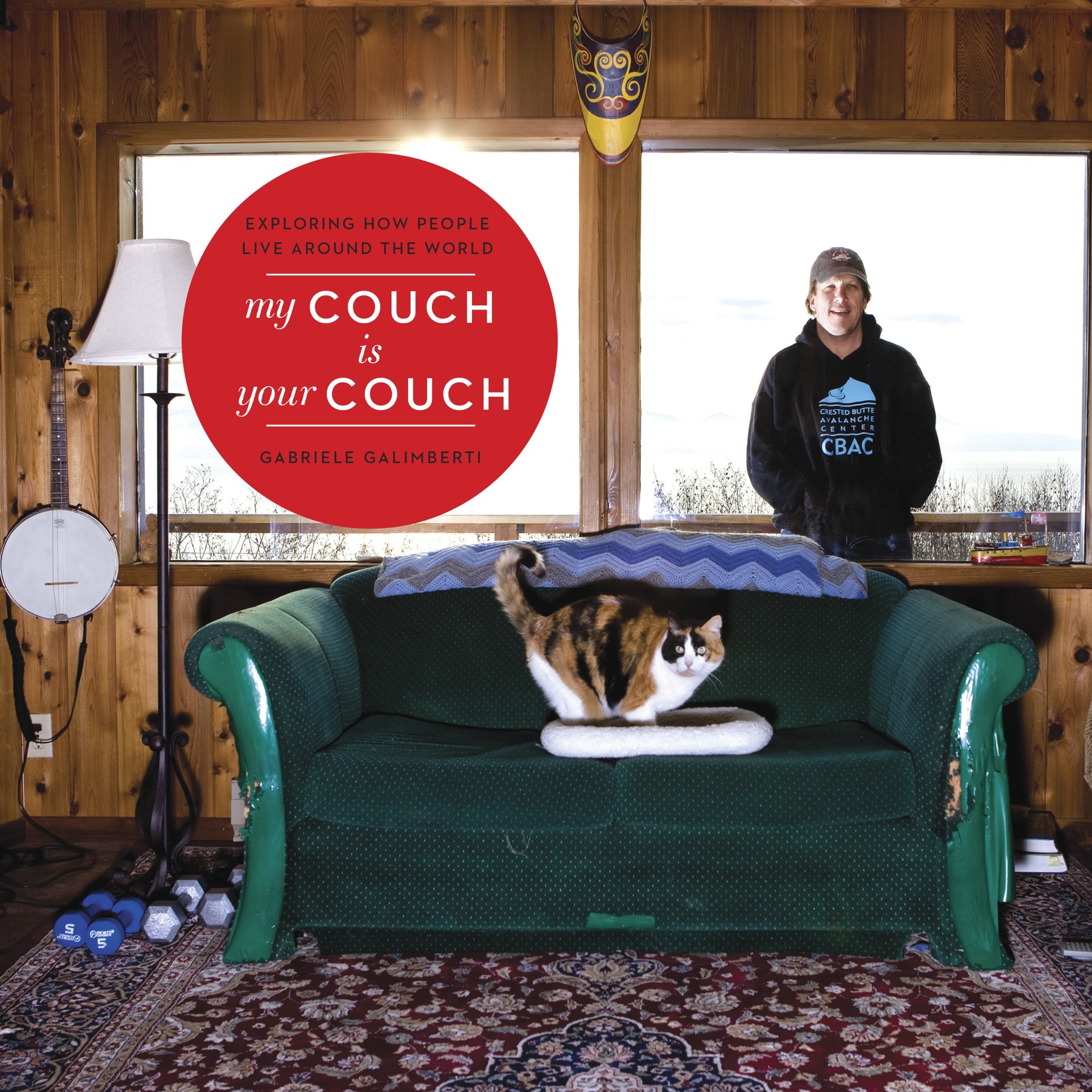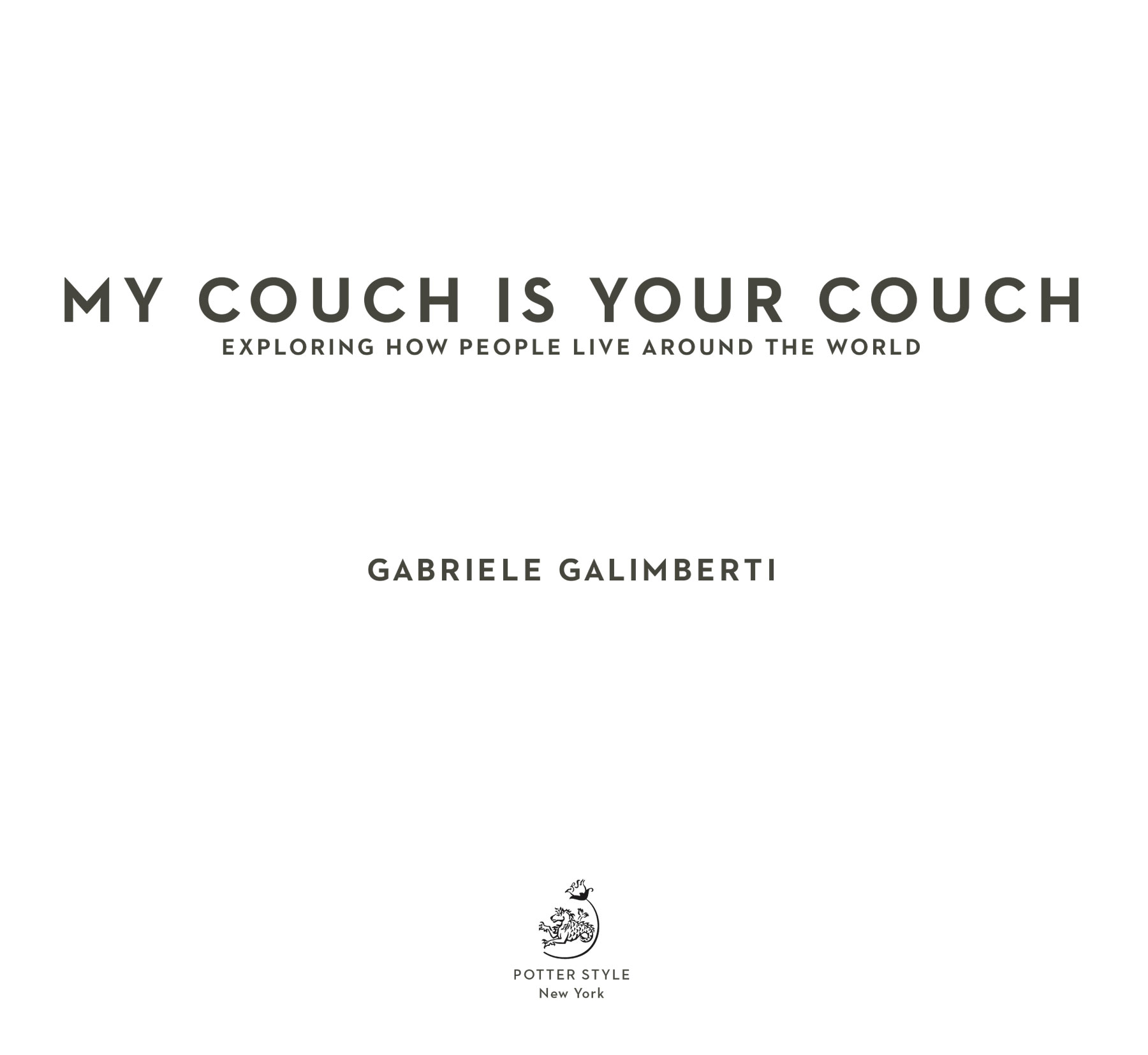Toy Stories: Photos of Children from Around the World and Their Favorite Things
In Her Kitchen: Stories and Recipes from Grandmas Around the World
Copyright 2015 by Gabriele Galimberti
All rights reserved.
Published in the United States by Potter Style, an imprint of the Crown Publishing Group, a division of Penguin Random House LLC, New York
www.clarksonpotter.com
www.crownpublishing.com
POTTER STYLE and colophon are registered trademarks of Penguin Random House LLC.
Selected photographs previously appeared in D la Repubblica between 2010 and 2012.
Library of Congress Cataloging-in-Publication Data is available.
ISBN9780804185578
eBook ISBN9780804185585
Photographs by Gabriele Galimberti
Cover design by Gabe Levine
v3.1
To my parents, who were with me through all of my travels, though they never left home

My grandfather and my parents in Rigutino, Italy, 1970.
Contents
INTRODUCTION
My couchsurfing journey began in November 2010. I decided I wanted to travel because I wanted to meet different people and see the world from a different perspective. I had been thinking for a long time about using couchsurfing as a way to do so. Also, because I take pictures by trade, I thought of making it into a photographic project. Id pitched the idea to a number of magazines but had never gotten a solid response from any of them. Then, out of the blue, I got a call from a friend of mine who worked as photo editor for D, the well-known weekly style magazine of Italian newspaper La Repubblica. Her director was interested in my journey, and I had just thirty days to prepare. Once a week, for the next twenty-four months, the magazine would publish the stories and portraits of couchsurfers that I sent in from wherever I happened to be.
I was excitedand, at the same time, terrified. This was long before the days of Airbnb, VRBO, and other home-rental programs. The first time Id ever tried couchsurfing had been in China, a few years earlier. On one gloomy November morning, as damp and cold as only China can be, after I had been there for work for more than fifteen days, I realized that in all that time, I had not spoken to a soul. The Chinese didnt understand me, and I didnt understand them. Thats when I remembered that someone had told me about couchsurfing: surfing (well, sleeping on, if we want to be literal) strangers couches. In theory, its a way to travel without spending much money, as one of the basic rules is that the hosts cannot ask for any sort of monetary compensation. In practice, though, its much more. Entering someones home means attempting to understand their lifestyle and habits, immersing yourself in their history, their day-to-day, their intimate space. Sometimes its easy, and other times its more complicated. In Xian, China, I was driven not only by financial motives, but also by the desire to find somebody who spoke English, with whom I could have a friendly chat. I ended up sleeping on a yoga mat on the floor of a students room. I shared the space that night with a dozen other people, and the sanitary conditions were awfulat best. A few days later, in Shenzhen, I was hosted by a wealthy local businesswoman who was looking for a chance to practice her English. I had my own private room in a princely villa and was welcomed to stay as long as I wished. That dichotomy was my first taste of the human diversity and richness of experience that can be had while couchsurfing.
In the years that followed, I hosted hundreds of couchsurfers in my home in Italy. It was by letting the world into my space that, little by little, the idea of taking my own couchsurfing journey began to evolve in my mind. By the time I began pitching the idea to magazines, the couchsurfing community had grown. In 2014, Couchsurfing.com had approximately seven million members from one hundred thousand cities worldwide. It is a social network made up of people from all sorts of backgrounds. What they all have in common, though, is their desire to meet face-to-face. One way is by offering fellow members a place to sleep, but some couchsurfers have other methods.
There are members of the community who (for a variety of reasons, ranging from lack of space to cultural taboos to work commitments) cannot host others. So, instead, they offer some of their time. In the course of my travels, I met many such couchsurfers and spent entire days talking with them and letting them be my guides. They shared with me their cities, their traditions, and their passions. Once, I played cricket under the midday sun in India. Another time, I rode through the snow-covered forests of Alaska on a sled pulled by a dozen dogs. I burned rubber on the streets of Dubai and even had breakfast with one of my musical idols. (He can no longer host anyone in his homethats the price of celebritybut he hasnt lost his human curiosity.)
Couchsurfing my way around the world, I discovered a different approach to travel and also, perhaps, to life. I learned to open myself up to others, to put myself in their hands, and to trust them. Obviously, it wasnt always an easy thing to do. The first step was to put aside the prejudices, stereotypes, and unfounded fears we all carry inside.
COUCHSURFING FROM continent to continent is no easy feat emotionally, but it can be a logistical struggle, too. How do you pack when youre leaving to travel around the world? The planning phase is crucial, complex, and less glamorous than one might imagine. You need a veritable mountain of patience and keen attention to detail. Precision and a focus on technical minutiae have always been part of my character, and these traits were a great help to me. To prepare for my trip, I spent an entire week at my computer, reading the profiles of couchsurfers from all over the world; wading through information on prices, climates, permits, and visas; comparing flights and airlines; and studying ferry, train, and bus schedules.
In designing my itinerary, I applied two selection criteriaone technical, the other human. In other words, I considered a citys weather, but also my curiosity regarding particular couchsurfers (as opposed to specific cities). This is how I decided to move from the cold toward the hot. I would start in Alaska and move into progressively warmer climesand I have to tell you, it was a brilliant choice. It meant that I would have to check one less bag on my last flight than I would on my first. After the first stops along my journey I shipped home my wool sweaters, thick socks, and heavy jacket. This cut my baggage down to just three pairs of pants, a dozen T-shirts, underwear, swim trunks, a scarf, two light sweaters, and a sweatshirt.
What I couldnt leave at home, of course, was my photographic equipment, or my computer, my lucky charm Polaroid picture of a deep-fried shoe (one of the first photos I took), and a survival kit with a few medicationsthose things you never think about, but that could end up saving your life (if, for example, you come down with diarrhea in Africa). Waiting to board the first plane, I looked a bit like a weird kangaroo, with a gigantic pack on my back and a smaller one over my chest.














